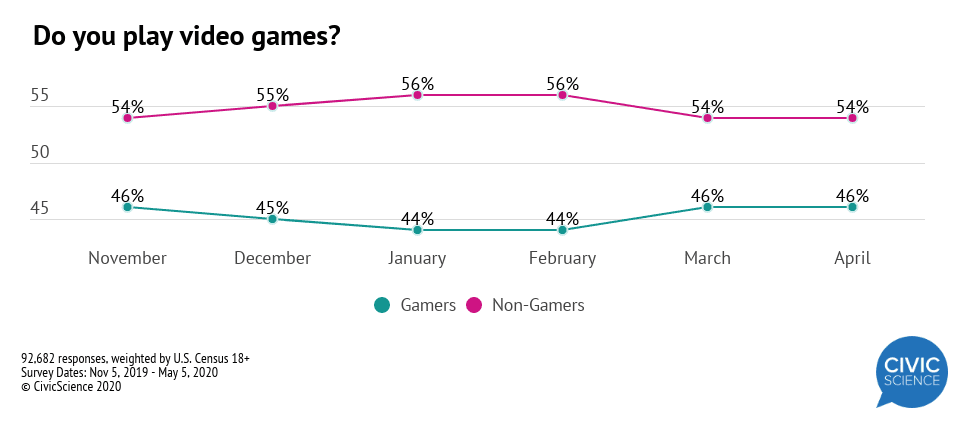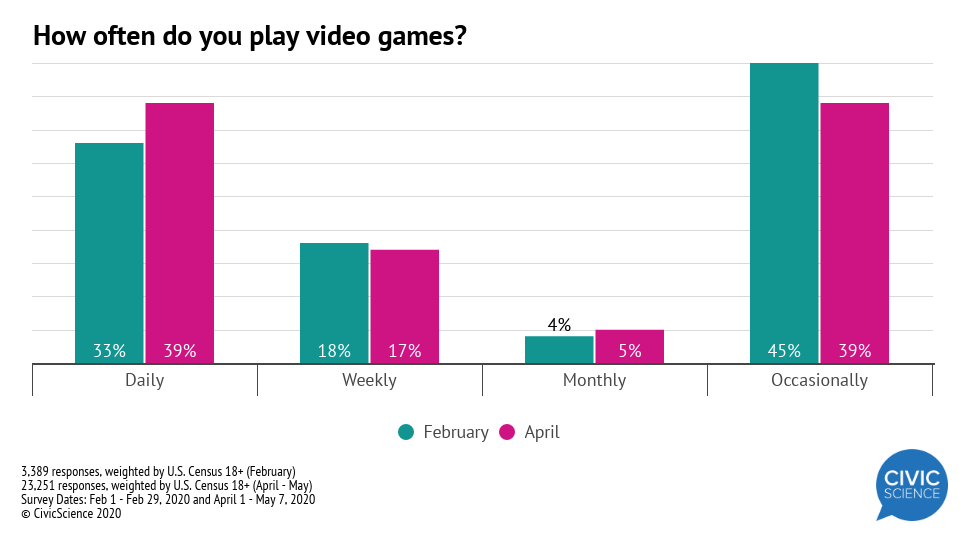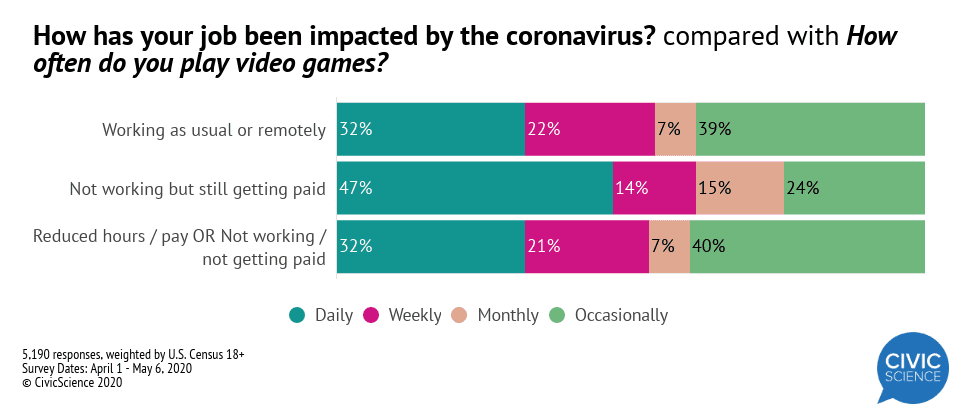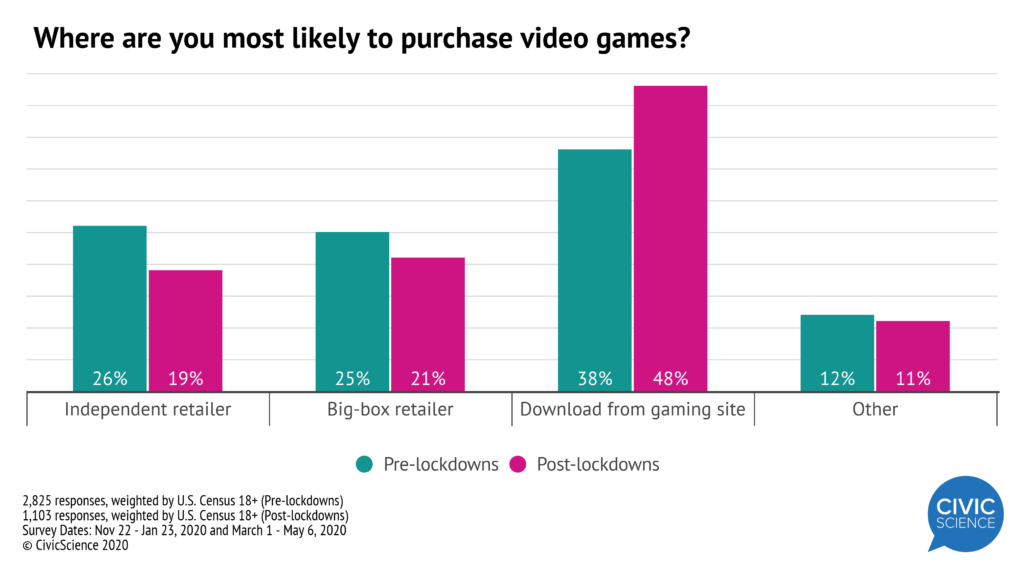Gaming may seem like the perfect antidote to staying entertained during lockdown and stay-at-home orders, along with streaming video and binge watching TV series. Plus, there’s a social benefit — some online video game platforms offer a way for people to stay connected and play virtually with friends and family.
Reports suggest the gaming industry has witnessed a flux in global sales since March. CivicScience tracking indicates the U.S. has seen a slight increase in gameplay habits.
A survey of more than 92,000 U.S. adults found that overall gameplay is up 2 percentage points from February, rising sharply from 44% to 46% in March and leveling off since then.
This growth can mostly be attributed to an increase in daily gameplay. Daily playing rose from 33% in February to 39% today.
While gameplay decreases with age, with 18- to 24-year-olds being the biggest daily players, the growth in daily gaming can still be seen across Millennial and Gen X age groups, as well as across both men and women.
Job status and gameplay. It’s easy to assume that working from home or being unemployed might lead to more time for video games. It turns out that those who are out of work and not getting paid are playing the same amount of video games as those working as usual or remotely.
Downloading games is quickly becoming the new normal. Getting games from sites like Steam or the PlayStation Store has unsurprisingly surpassed buying games from retailers, growing from 38% in January to 48% today among gamers.
However, numbers haven’t risen for up-and-coming video game streaming services, such as Google Stadia and Playstation Now, since the start of lockdowns and since CivicScience last reported on it in 2019. In addition, virtual reality products such as Oculus Rift and HTC Vive headsets, haven’t seen growth in ownership — although tracking shows a slight increase in intent to buy.
Ultimately, gaming is pretty huge in the U.S., with now close to 50% of the population playing at some level. Coronavirus lockdowns appear to have given gameplay a bump, but haven’t generated a huge spike among adults. The data suggest that video games haven’t cannibalized the free time of non-gamers, but rather just shifted habits of those who were already gamers towards more daily play. Given that job status seems to affect gameplay, we’ll be keeping an eye on where things go from here.












